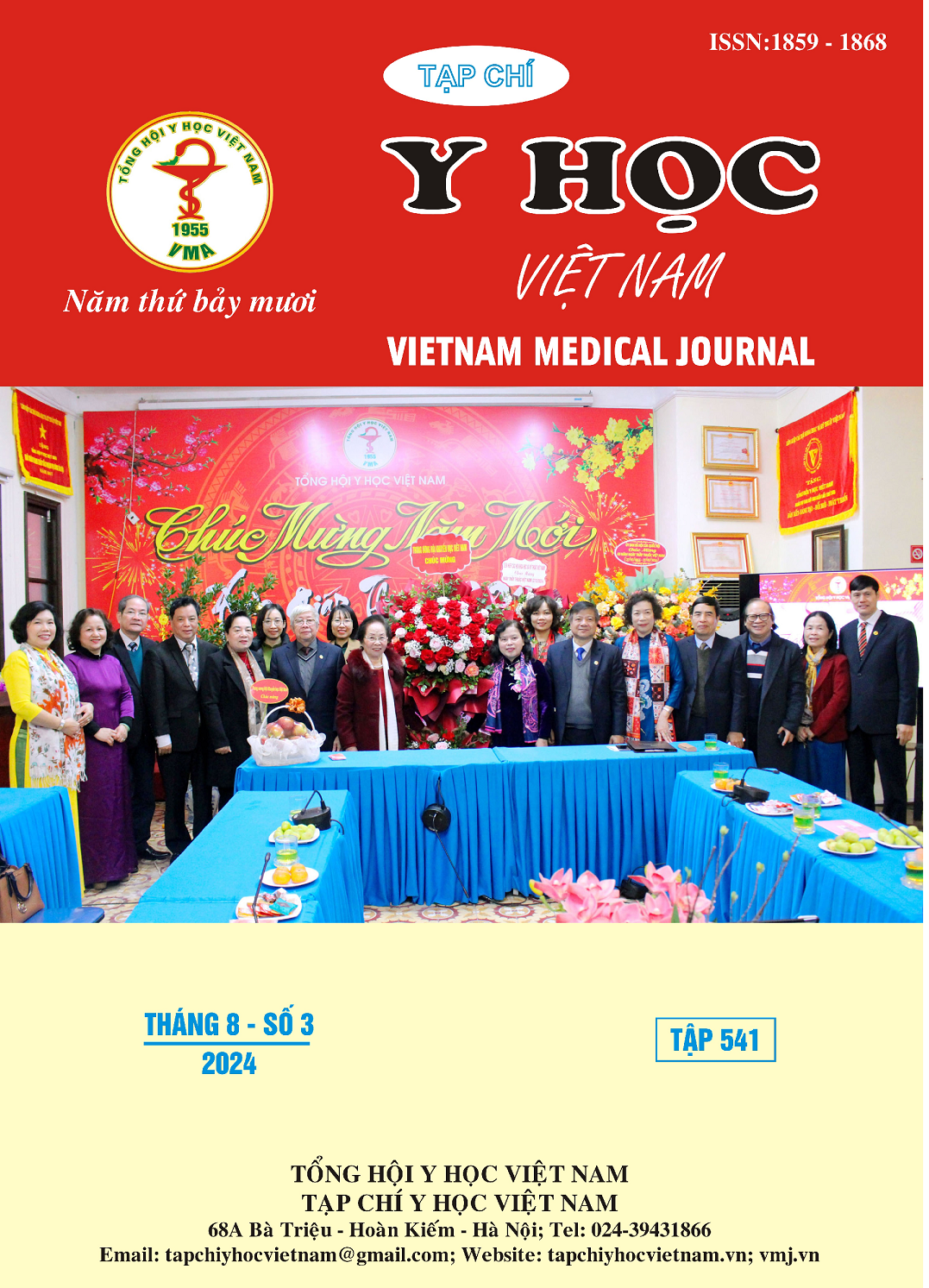FALLS AND RISK OF FALL IN OUTPATIENT TYPE 2 DIABETES PATIENTS AT HOSPITAL E
Main Article Content
Abstract
Objective: This study aims to describe the prevalence of falls and fall risk among elderly patients with diabetes mellitus (DM) receiving outpatient treatment at Hospital E. Methods: A cross-sectional descriptive study was conducted on 339 diabetic patients aged 60 years and above who were receiving outpatient treatment at Hospital E. Data were collected through interviews, clinical examinations, and medical records. The fall risk assessment tools included the 21-item Fall Risk Index, Timed Up and Go (TUG), and Functional Reach Test (FRT). Results: Among the 339 patients, 37.8% had experienced falls, and 20.7% had fallen in the past 12 months. According to the 21-item Fall Risk Index, 53.7% of the patients were at high risk of falling. Results from the TUG test showed that 15.1% of the patients were at risk of falling, and from the FRT, 18.6% were at risk. Factors related to fall risk included gender, age, duration of diabetes, and living conditions. Male patients, elderly individuals, and those with a longer duration of diabetes had a higher risk of falling. Conclusion: The study indicates a high prevalence of falls and fall risk among elderly diabetic patients, emphasizing the need for fall prevention interventions. Fall risk assessment tools such as the 21-item Fall Risk Index, TUG, and FRT have proven effective in early detection of fall risk. Implementing fall prevention measures is essential to improve the quality of life for patients
Article Details
Keywords
falls, fall risk, diabetes mellitus, elderly
References
2. Freire LB, Brasil-Neto JP, da Silva ML, et al. Risk factors for falls in older adults with diabetes mellitus: systematic review and meta-analysis. BMC geriatrics. 2024;24(1):201.
3. Vinik AI, Camacho P, Reddy S, et al. AGING, DIABETES, AND FALLS. Endocr Pract. 2017;23(9):1117-1139.
4. ElSayed NA, Aleppo G, Aroda VR, et al. 2. Classification and Diagnosis of Diabetes: Standards of Care in Diabetes-2023. Diabetes care. 2023;46(Suppl 1):S19-s40.
5. Ishimoto Y, Wada T, Kasahara Y, et al. Fall Risk Index predicts functional decline regardless of fall experiences among community-dwelling elderly. Geriatrics & gerontology international. 2012;12(4):659-666.
6. Kear BM, Guck TP, McGaha AL. Timed Up and Go (TUG) Test: Normative Reference Values for Ages 20 to 59 Years and Relationships With Physical and Mental Health Risk Factors. Journal of primary care & community health. 2017;8(1):9-13.
7. de Waroquier-Leroy L, Bleuse S, Serafi R, et al. The Functional Reach Test: strategies, performance and the influence of age. Ann Phys Rehabil Med. 2014;57(6-7):452-464.
8. Anh NT, Hương NTT, Tâm NN, et al. Một số yếu tố liên quan với ngã ở bệnh nhân đái tháo đường cao tuổi tại Bệnh viện Lão khoa Trung ương. Vietnam Journal of Diabetes and Endocrinology. 2022(52):56-61.
9. Alasmari RS, Hassani HA, Almalky NA, et al. Risk factors for fall among the elderly with diabetes mellitus type 2 in Jeddah, Saudi Arabia, 2022: a cross-sectional study. Ann Med Surg (Lond). 2023;85(3):412-417.
10. Chiba Y, Kimbara Y, Kodera R, et al. Risk factors associated with falls in elderly patients with type 2 diabetes. Journal of diabetes and its complications. 2015;29(7):898-902.


